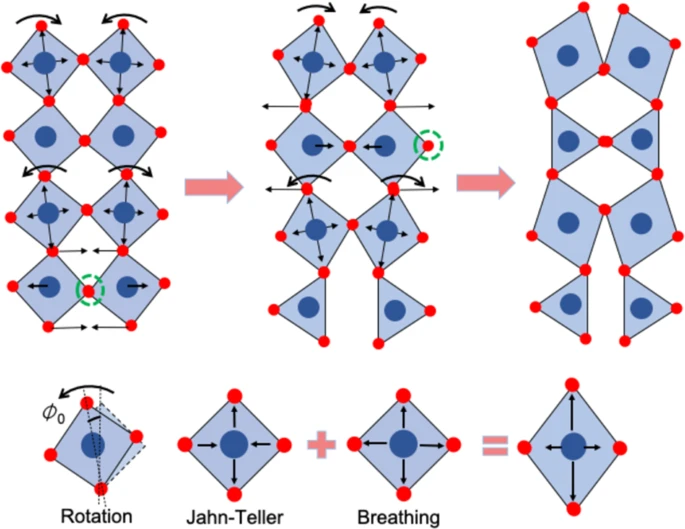Phys.org November 10, 2020
To create devices that mimic what occurs in our brain’s neurons and synapses, researchers need to overcome a fundamental molecular engineering challenge: how to design devices that exhibit controllable and energy-efficient transition between different resistive states triggered by incoming stimuli. A team of researchers in the US (University of Chicago, Argonne National Laboratory) investigated the defective cobaltites and unraveled the structural, electronic, and magnetic changes responsible for the metal-to-insulator transition (MIT) when oxygen vacancies are introduced in the material. They showed that cooperative structural distortions instead of local bonding changes are responsible for the MIT, described the subtle interdependence of structural and magnetic transitions, and presented a model to predict the required electric bias to drive the transition…read more. Open Access TECHNICAL ARTICLE

Main structural deformations occurring during the perovskite to BM phase transition identified in our calculations. Credit: npj Computational Materials volume 6, Article number: 170 (2020)